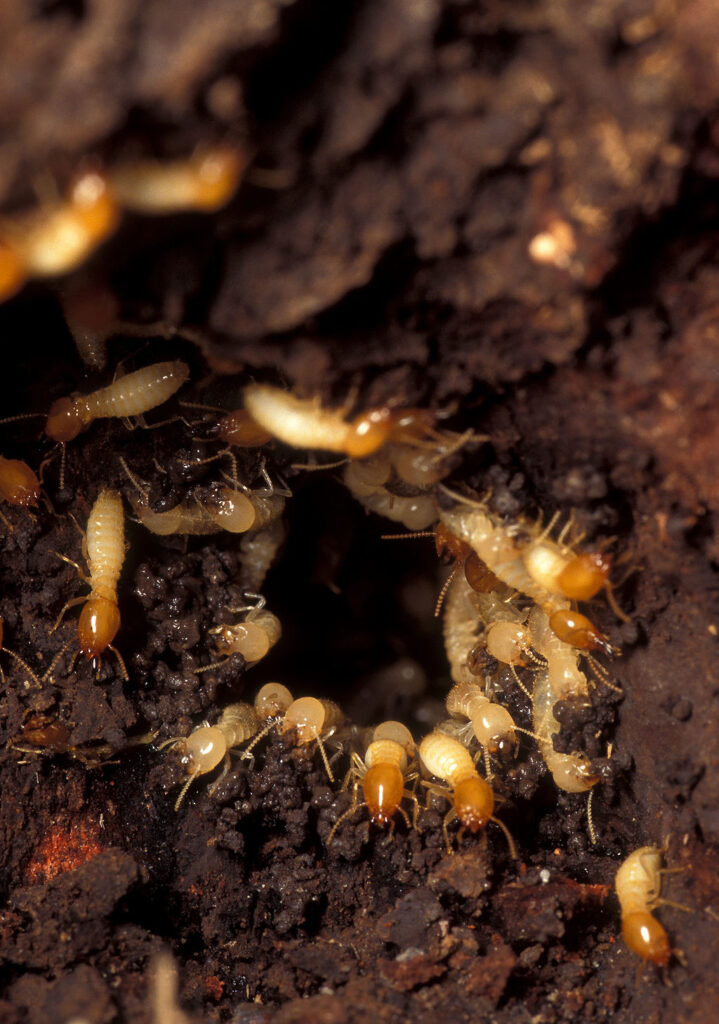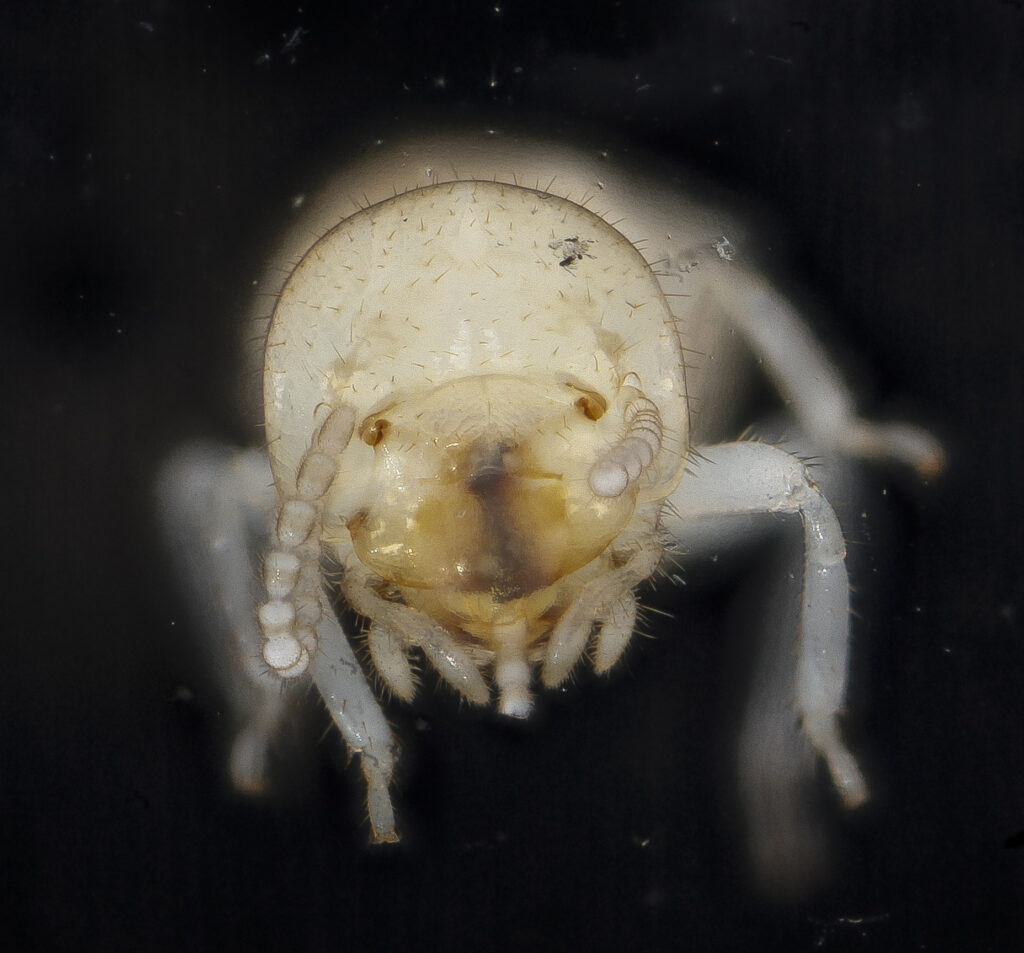Things You Need to Know About Termite Control
Winged Swarmers
An established termite colony will produce sexually mature winged male adults called alates after a few years of quietly eating their way into the wood of your home or building. These alates fly off to create nests of their own sometime during spring when the weather is mild. If you see winged alates in your home, it’s a good indication that you have a termite infestation somewhere within your walls.
Mud Tubes
Termites build mud tubes made from a variety of particulate matter as well as soil and wood to cross open spaces they cannot go through. Mud tubes also protect termites from predators and create the humid environment they need in order to survive. You will typically find them along the foundation of your house and around various possible entry points. If you see a mud tube, remove a small middle section without disturbing either end and inspect it again after a few days. If the section you removed has been built up again, you have an active termite colony sharing your living space.
Filled-In Construction Joints
Sometimes termites don’t leave such obvious signs of their presence as mud tubes. If you notice crusted dirt or mud in small gaps or cracks in the concrete surfaces in your home or construction joints that have been filled in with mud, it’s highly likely that termites have made themselves comfortable in your home.
Firewood
Store your pile of firewood above the ground and at least 20 feet away from your house to discourage termites from feasting on them and then using them to find their way inside your house.
Clear Dead Wood from Your Property
Termites are voracious eaters. Remove fallen tree limbs and other dead wood from your immediate surroundings to avoid giving termites an easy food source.

Does Homeowners Insurance Cover Termite Damage?
A termite infestation can cause a lot of damage to your house. According to the National Pest Management Association (NPMA), they cost homeowners an estimated $5 billion a year to control and repair damage
IS TERMITE DAMAGE COVERED BY MY INSURANCE POLICY?
According to the National Association of Insurance Commissioners (NAIC), many homeowners insurance policies don’t cover termite damage or removal. Termite infestations may be prevented with routine home maintenance and is the responsibility of the homeowner.
ARE THERE ANY SCENARIOS IN WHICH HOMEOWNERS INSURANCE WOULD COVER TERMITES?
If termites were to chew through your home’s wiring and cause a fire, your insurance company may step in to help pay for the damages, as fire is a covered peril under most policies
PROTECTING YOUR HOME AGAINST TERMITES
estimate it typically takes three to eight years for termites to cause appreciable damage. Termites don’t only destroy wood, they can also destroy cloth, carpets and paper.
To help prevent termite damage to your house, the National Pest Management Association (NPMA) recommends:
Avoiding moisture accumulation by diverting water away from your home’s foundation (make sure you have properly functioning gutters, downspouts and splash blocks)
Regularly checking for changes to all your wooden areas, like windows and doorframes
Inspecting the foundation of your home bubbling paint, or wood that sounds hollow when you tap it
Maintaining an 18-inch distance between the wood portions of your home and the soil (termites can still gain access by building so-called shelter tubes or chewing through non-wood materials, but barriers can be built to discourage them)

TERMITES
Termites cause billions of property damage every year – don’t let your home be compromised by these hungry creatures. Termites love to eat and digest wood and other cellulose material (like cardboard and paper). The wood studs and joists in your home are made of the same cellulose wood material, the wallboard has a paper backing, and those cardboard boxes you have stacked in the corner are mighty tasty.
TERMITE TREATMENTS
In the thousands of termite treatments we’ve performed, we’ve continuously learned and adapted our treatment methods to be the most effective in battling termites. Whether you need a spot treatment, a soil barrier, a complete perimeter barrier, or the foundation’s stemwall treated
DO I HAVE TERMITES?
The best defense against termite damage is a good offense, mainly, your own eyes. What you should look for are the small, sandy mud tubes the termites build and travel within. Check around the foundation of your home – if you see a sandy-looking ‘vein’ going from the soil up to the stucco/siding, it’s probably termites. Have a weird, sandy-colored ‘stalactite’ looking thing hanging down from your ceiling? Yep, termites.
Subterranean termites can enter your home through a crack as small as 1/32 of an inch, and they usually get in through expansion joints in the concrete, through cracks in the foundation, where plumbing comes through the foundation, inside hollow block walls, and along the foundation. If you want to know for sure if your home has termites
HOW DO I STOP TERMITES?
The best way to stop termites is to remove potential food sources and eliminate moisture problems.

How to get rid of termites from your home
Nothing is quite as damaging to a house as termites. They can eat through wooden and plant-based materials until there’s nothing left. Here’s your guide on how to get rid of termites.
The best approach for removing your home of termites is to get your place professionally checked regularly. Of course, in addition, you need to keep an eye on things yourself in between inspections.
How to tell if you have a termite problem
There are different kinds of termites that can infest your home: Drywood termites, subterranean termites, and dampwood termites. Before taking any measures to eradicate termites from your home, it’s wise to determine whether you have an infestation and identify what type of termites you’re dealing with.
Mud tubes
Have a look around the foundations of your house, including wall edges and posts, and if you find mud tubes, you likely have an infestation of termites. These mud tubes look like thin brown tracks made of dirt or mud, and run along flat surfaces. According to Danny, mud tubes “protect termites from light and ants”, so they can safely travel back to their colonies.
Wings
When termites discover a good spot to dig into the wooden structures of your home, they will shed their wings. So if you find wings scattered around window sills or doorways in your house, an infestation may be about to start (or has already begun).

Top Termite Killers
There are many different termite killers out there, from liquid termiticides to bait stations and foams. Here, we’ll share the pros and cons of the top termite killers on the market.
If your home has been invaded by termites, it’s important to act fast. Termites can make a meal out of your home before you know it, and you could be out thousands. You may be looking into termite killers—which can be overwhelming. There are tons on the market, including liquid termiticide, baits, and direct chemical treatments.
This Old House Reviews Team has done all the research for you, rounding up the Top Termite Killers of 2020. We’ve broken down our top picks by active ingredient, application method, pros and cons, and more.
We’ve selected the top five termite killers of the year, ranging from liquid treatments for barriers, to foams for spot treatments and bait stations.
This highly effective, highly concentrated termiticide is one of the best out there. To use Taurus SC, you need to dig a 6-inch trench around your home’s perimeter, and pour the solution in every 10 feet.